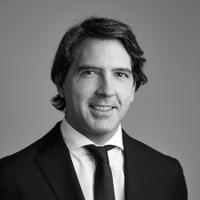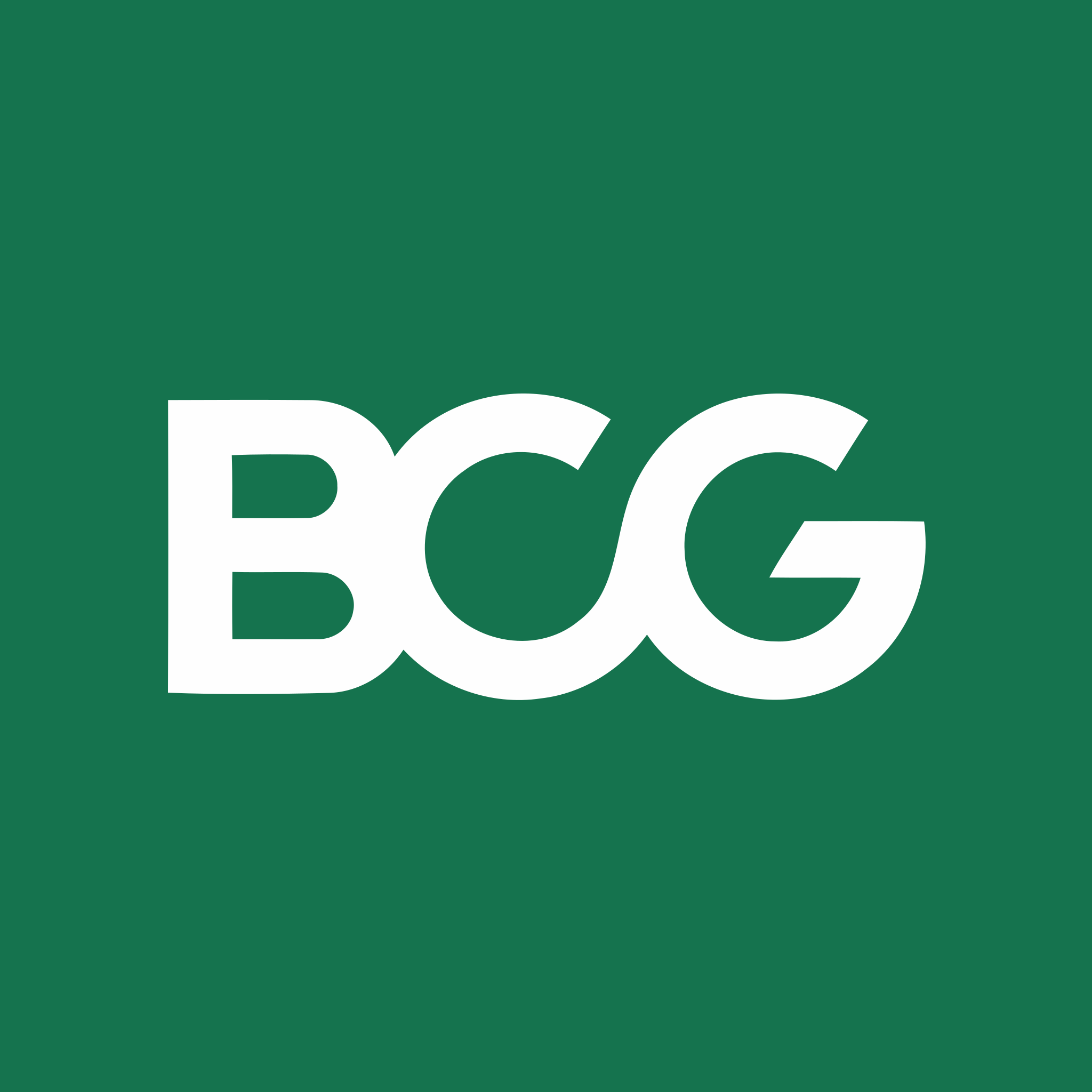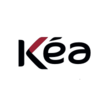Detailed content of our market study
 Inforamtion
Inforamtion
- Number of pages : 35 pages
- Format : Digital and PDF versions
- Last update :
 Summary and extracts
Summary and extracts
1 Market Overview
1.1 Definition and presentation
Spas are natural places or equipped facilities that take advantage of hot springs or mineral water, characterized by a composition rich in elements and minerals with properties beneficial to the body and mind. Known and used since ancient times, spas offer therapeutic, curative and relaxing treatments, thanks to the specific characteristics of thermal waters, often rich in sulfur, calcium, magnesium or bicarbonates. Spas offer a wide range of treatments, including thermal baths, mud therapy, inhalations, and massage, aimed at physical well-being, treatment of skin conditions, relief of joint and muscle pain, and treatment of respiratory problems.
The value of the global spa market shows steady growth between 2024 and 2030, rising from $182.90 billion to $384.84 billion, an increase of 110.4 percent and a compound annual growth rate (CAGR) of 13.2 percent. Growing awareness of the benefits associated with wellness and self-care has led to increased demand for massage therapies. According to a2022 American Massage Therapy Association (AMTA) annual survey, 95 percent of people believe massage is beneficial for overall health and well-being. In 2023, Europe accounted for 25.3 percent of the value of the global spa market, surpassing the United States (19.4 percent). The remaining 55.3 percent was distributed in the rest of the world, signaling strong growth of the industry outside these two main regions. The European spa market will continue to grow between 2024 and 2030, increasing 28 percent from $42.62 billion to $54.55 billion, a CAGR of 4.2 percent.
In Italy, the turnover of physical wellness centers experienced an overall decline of 7.1%. The pandemic crisis had a significant impact, with a 50.3% contraction in 2020 compared to 2018. However, between 2021 and 2023, the sector showed a 66.5 percent recovery, signaling a renewed focus on wellness. The number of spas in Italy grew +84.3% between 2018 and 2023, driven by the post-pandemic rebound and renewed interest in the sector. However, the number of employees fell by 27.1 percent, highlighting persistent economic and employment difficulties. The contrast between facility growth and staff reductions underscores the need for targeted interventions to sustain employment and ensure sustainable growth of the spa industry in Italy.
The spa industry continues to be a growing sector globally, driven by increased awareness of its health and wellness benefits. Europe remains a key market, with Italy showing signs of recovery and opportunities for development, despite some critical employment issues. To ensure sustainable growth, it will be essential to invest in policies to support employment, innovation in services and marketing strategies that enhance the spa heritage. If adequately supported, the sector will be able to consolidate itself as a pillar of wellness and health tourism, responding to the needs of an increasingly quality-of-life-conscious public.
1.2 Global Market
The growth of tourism in Europe and Asian countries such as Thailand, Indonesia and Vietnam has led to an increase in demand for spa services. As leisure and business travel increases, so does the desire for relaxation and wellness experiences. These factors have contributed to the growth of the spa market in these regions, with more and more tourists choosing spa treatments and services during their travels. The value of the global spa market shows steady growth between **** and ****, rising from $***.** billion to $***.** billion, an increase of ***.* percent and a compound annual growth rate (***) of **.* percent.
Global spa market value World, ****-****, in US$ billion GrandViewResearch
Consumers are increasingly choosing massage therapies due to a growing awareness of the benefits related to wellness and self-care. According to a**** American Massage Therapy Association (***) annual survey, ** percent of people consider massage to be beneficial for overall health and well-being. In addition, many people resort to spa treatments as a natural and non-invasive way to manage and relieve physical discomfort. The number of visits to spas and new facilities is on the rise due to an increased focus on theimportance of self-care and wellness. Seeking relaxation and stress relief, clients are finding spas a ...
1.3 The European market
The European spa market is undergoing a major phase of growth and consolidation, driven by increasing demand for wellness, relaxation and therapeutic treatments. Between **** and ****, the sector is expected to expand steadily, increasing by ** percent from $**.** billion to $**.** billion. This development is supported by a compound annual growth rate (***) of *.* percent, highlighting a positive trend that reflects the increased focus on self-care and wellness tourism. Europe is thus confirmed as a key market for the spa industry, with an increasingly diversified offering and an ever-expanding audience.
Value of the European spa market Europe, ****-****, in US$ billion GlobalData
Greece, Italy, Spain, Switzerland and Austria are poised to welcome new spa facilities, helping to boost and diversify health and wellness offerings across the continent. Indeed, therise of wellness tourism in Europe is boosting the growth of the spa market, solidifying the region's role as a leading destination for relaxation and therapeutic treatments.
In ****, Germany accounted for **.* percent of the value of the European spa market, confirming it as a major player in the sector. The rest of Europe covered **.* percent of the market, showing awide distribution of spa facilities and growth opportunities in different countries.
German market presence in European value Europe, ...
1.4 The Italian market
Between **** and ****, the Italian spa market is expected to grow steadily, increasing by ** percent from ***.** to ***.** million euros. This development follows the positive trend of the European market, registering a compound annual growth rate (***) of *.** percent, in line with the expansion of the entire spa sector on the continent. Italian spa market value forecast Italy, ****-****, in millions of € Company Register, Businesscoot elaboration Between **** and ****, service revenues of physical wellness centers in Italy experienced an overall decline of *.* percent. The pandemic crisis had a significant impact on the sector, with a **.* percent contraction in **** compared to **** due to health restrictions. However, the sector has shown a gradual recovery, reaching a value of *** million in ****, although still below pre-crisis levels. Growth between **** and **** shows a recovery of **.* percent, indicating a positive trend, but still not enough to bring turnover back to **** levels.
Turnover of physical wellness center services [***] Italy, ****-****, in millions of € Istat, Companies Register
In Italy, spas account for **.* percent of the value of Ateco code [***], while physical wellness centers (***) contribute **.* percent. This figure highlights the economic dominance of spas over other wellness services, confirming their central role in the relaxation and body care industry.
Breakdown of the value of ...
1.5 Inflation suffered by the sector
In recent years, the spa market has faced a number of challenges related to inflation, which has profoundly affected both the operating costs of establishments and consumer behavior. Spas, which rely on intensive use of natural resources and energy, have seen rising costs to heat pools, operate saunas and ensure a comfortable environment for clients. Added to this is the rising cost of raw materials needed to maintain and renovate facilities, which often feature complex facilities and historic infrastructure. Labor has also become more expensive, with employees demanding higher wages in response to thegeneral rise in the cost of living. These factors have led to higher rates for spa services, with many establishments forced to adjust prices to offset higher operating costs.
On the demand side, consumers have faced tighter budgets due toinflation, reducing spending on activities considered non-essential, such as spa stays. However, a segment of customers continues to see spas as anopportunity to take care of their physical and mental health, something that, especially after the pandemic, has become increasingly important. This perception has prompted many facilities to focus on offerings that combine wellness and health, such as specific treatments for stress or targeted therapeutic courses. To cope with ...
2 Demand analysis
2.1 Overview of demand
Between **** and ****, the value of production for code [***] in Italy decreased by ** percent, from *** million to ***.* million. **** marked a significant drop (***), due to the impact of pandemic restrictions. However, the sector showed signs of recovery, with a **.* percent increase between **** and ****. Despite this recovery, the value of production has not yet returned to pre-pandemic levels, highlighting the need for further action to facilitate a full recovery of the sector.
Value of production [***] Italy, ****-****, in millions of € Istat
Average monthly household spending on beauty and personal care treatments in Italy increased by **.* percent between **** and ****, from €*.** to €*.**. After a significant drop in **** (***) due to pandemic-related restrictions, the sector recovered steadily to exceed the pre-pandemic level in ****. This trend shows a newfound focus on wellness and personal care, with demand growing in the post-pandemic period.
Average monthly household expenditure - [***] Beauty treatments Italy, ****-****, € current Istat
2.2 Demand drivers
The spa industry, according to Federalberghi's study, is poised for change and renewal. Currently, market demand no longer focuses exclusively on themedical aspect, but extends to the broader concept of wellness, placing overall well-being at the center of the spa experience. This change represents a great opportunity for development, pushing the industry to integrate innovative services and adapt to new consumer needs.
Themain objective of Federalberghi's research was to analyze the evolution of people's subjective perception of spas after the pandemic. Customers' needs and expectations have changed compared to the past: the health crisis has redefined priorities, orienting people toward a greater focus on nature and the environment, rather than exclusively man-made and artificial settings.
In this post-pandemic awakening phase, there has emerged a growing sensitivity to the health of the area in which spa facilities are located. Today, it is no longer enough for a spa to be modern and equipped: customers also value the quality of the surrounding environment. The territory must be healthy, livable and respected, as those who choose spas are not only looking for physical well-being, but also for an immersive and harmonious experience with the environment.
Thesurvey of a sample of the Italian population also ...
2.3 Trends in spa demand
During the period under consideration, online searches for spas in Italy fluctuated significantly, with recurring peaks in August of each year(***), probably related to the seasonality of demand. From January **** to January ****, there is a *.* percent decrease in the index, from **.* to **.*. Should this negative trend continue, future estimates suggest a downward trend, despite seasonal peaks confirming steady interest in the summer months.
Trends in online searches for spas Italy, ****-****, index Google Trends, Businesscoot elaboration
table { width: **%; border-collapse: collapse; margin: ...
2.4 New Demand Trends
Spas, which have always been synonymous with wellness and health, are undergoing a significant transformation to adapt to new consumer needs. The changing demand reflects a shift in people's values and priorities, who are seeking experiences that are increasingly personalized, sustainable, and integrated with their lifestyles. Below is an analysis of the key trends that are redefining the spa industry.
*. Holistic wellness and personalization
Focus on body, mind and spirit: Consumers are seeking experiences that integrate physical treatments with activities for mental well-being, such as yoga, meditation and mindfulness. Personalized treatments: There is a growing demand for tailored programs based on biometric analysis, genetic testing or one-on-one consultations with experts. Preventive approach: Many people attend spas not only for curative treatments, but also to prevent health problems and reduce chronic stress.
*. Sustainability and responsible tourism
Eco-friendly facilities: Increasingly environmentally conscious consumers favor spa facilities that use renewable energy, sustainable materials and water conservation practices. Connection with nature: Spas set in natural settings, such as forests or mountains, are preferred for their positive impact on psychological well-being. Localism: There is growing interest in experiences that enhance local products and traditions, such as the use of local mud, herbs and minerals.
*. ...
3 Market structure
3.1 Structure and dynamics of the Italian market
From **** to ****, the number of spas in Italy experienced an overall growth of **.* percent, from *** to ***. After a slight decline between **** and ****, the sector recovered its pre-**** levels in ****, and then expanded significantly between **** and ****. In thelast year, a marked increase of **.* percent was observed, likely driven by renewed interest in spa wellness and development policies aimed at the sector.
Numbers of spa establishments [***] Italy, ****-****, in numbers Istat, Companies Register
In ****, most spa establishments in Italy are limited liability companies (***). Other legal forms, such as sole proprietors, general partnerships and limited partnerships, account for smaller shares, each around *-*.* percent.
Legal form of spas Italy, ****, in % Istat
Between **** and ****, the number of employees working in spas in Italy decreased by **.* percent, from *,*** to *,***. After a significant decline in **** and ****, probably due to the effects of the pandemic, the sector showed a partial recovery in ****, followed, however, by a new reduction in ****. This trend highlights a persistent difficulty for the sector to return to pre-**** levels, suggesting the need for revitalization strategies and employment incentives to foster a more robust and sustainable recovery.
Number of employees working in spas [***] Italy, ****-****, in number Istat
3.2 Geographical distribution
Geographical distribution of companies in the sector ****:
From the point of view ofspa supply,Italy ranks *th worldwide, preceded by China, Japan, Germany and Russia, according to the ranking compiled by Federterme. The distribution of spa companies in Italy shows a clear prevalence in the North of the country (***).
Federterme, on the occasion of its ***th anniversary, summarized these data in its screening on spa tourism in Italy, confirming the strategic role of the sector on an international and national level.
Geographical distribution of spas ****:
Italy boasts a supply of *** operating spas, distributed throughout the country, with ** percent of facilities accredited by the National Health Service. Italian municipalities with spas total ***, divided into ** spa resorts, ** seaside resorts, ** cities of art, ** mountain resorts, * hillside resorts, * lake resorts and ** other locations. Excluding the three large urban centers with spa facilities(***), most spa resorts are characterized by low population density.
Italian spas show a strong geographic concentration, with more than half located in just two regions: Veneto (***).
Economically, this distribution is partly balanced by the fact that establishments in Veneto and Campania tend to be smaller in size, thus reducing any imbalances associated with the high concentration of the industry in these two ...
3.3 The main players in the market
The following are the main spas in Italy:
Terme di Saturnia: Nestled in the beautiful Tuscan Maremma, they are famous for their sulfurous waters that flow naturally at **.*°C. According to legend, they were created by the wrath of the god Saturn to bring peace to mankind. Today, the spa is an oasis of relaxation and well-being, thanks to the therapeutic properties of the mineral-rich waters, which are ideal for the skin and respiratory system. A must-see attraction is the Mill Falls, free natural pools set in a breathtaking landscape. For a more exclusive experience, the spa resort offers a luxury spa, golf course and *-star services. Easily accessible from Grosseto or Rome, the spa is a perfect destination to rejuvenate in harmony with nature.
Terme di Sirmione: Located on the beautiful peninsula overlooking Lake Garda, they are one of Italy's most famous spa destinations. These spas are distinguished by their sulfurous salsobromoiodic waters, rich in beneficial properties, which flow from the Bojola Spring. Ideal for health and wellness, they offer a unique experience in an extraordinary natural and historical setting. Highlights include the Aquaria Thermal Spa, an oasis of relaxation with thermal pools, whirlpools, saunas and breathtaking views of the ...
4 Supply analysis
4.1 Types of services offered
Thermal cures include mud baths, caves and mineral waters used for therapeutic, preventive and rehabilitative purposes and must be prescribed by a physician. Spas, whose requirements are regulated, like waters, by Law No. *** of July **, ****, and implemented by Royal Decree No. **** of September **, ****, may use only waters authorized by the Ministry of Health, which periodically verifies their characteristics and therapeutic power.the Federterme website explains that for waters "In Italy the classification of Marotta and Sica is adopted in which quantitative and qualitative aspects are taken into account."
Spas represent a unique resource that combines health, wellness and entertainment, offering diversified experiences to meet the needs of a diverse audience. From recognized medical treatments geared toward prevention and health recovery to treatments dedicated to relaxation and beauty, spas cater to different lifestyles and preferences. In addition to curative aspects, spas can transform themselves into places of leisure, luxury, sports and culture, integrating personalized and innovative services. This variety makes it possible to meet the needs of families, couples, professionals, sportsmen and nature lovers. The following table details the different types of spa offerings, with concrete examples, key benefits and specific targets.
table { width: ***%; border-collapse: collapse; margin: **px *; font-size: **px; } table, th, ...
4.2 Price analysis
Italian spas offer unique experiences that combine health, relaxation and culture, making them an ideal destination for those who want to take care of their bodies and minds. Each spa facility is distinguished by personalized services, evocative landscapes and a variety of treatments ranging from psychophysical well-being to the treatment of specific illnesses.
Please note that prices may vary depending on the season, day of the week, length of access and services included.
Please note that prices may vary depending on the season, day of the week, length of access, and services included.
Between **** and ****, the consumer price index for spa treatments increased by*.* percent, from **.* to ***.*. The increase has been especially noticeable since ****.
Annual Consumer Price Index for the Whole Community - [***] Spa treatment, corrective gymnastics, ambulance services, and rental of health care equipment Italy, **** - ****, base index ****=*** Istat
In ****, looking at monthly data, the index continued to rise slightly but steadily from ***.* in January to ***.* in December.
Monthly Consumer Price Index for the Whole Community - [***] Spa treatment, corrective gymnastics, ambulance services and rental of health equipment Italy, ****, base index ****=*** Istat
4.3 New supply trends
Spas, which have always been a symbol of relaxation and well-being, are undergoing a profound transformation to adapt to new consumer needs and the challenges of the modern market. Today, spa offerings are evolving toward an increasingly personalized, sustainable and integrated experience, combining tradition and innovation.
*. Personalization of the Spa Experience
Tailored Pathways: Spas are introducing customized pathways based on users' preferences and health goals, such as anti-stress, detox, or immune-boosting treatments. Advanced Technologies: The use of artificial intelligence and apps to monitor health parameters enables the creation of adaptive spa programs that change based on results. Multisensory Wellness: Experiences that engage all the senses, such as personalized aromatherapy and therapeutic music, make the offering unique for each client.
*. Sustainability and Eco-Wellness
Green Facilities: New spas focus on LEED or BREEAM-certified buildings, built with natural materials and powered by renewable energy. Natural Treatments: Growing use of organic and local ingredients in treatments, such as mud and thermal waters supplemented with local medicinal herbs. Environmental Impact Reduction: Practices such as recycling spa water and eliminating single-use plastics are increasingly common.
*. Integration with Wellness Tourism
Holistic Packages: Offerings that combine spa stays with activities such as yoga, nature hikes and ...
5 Regulations
5.1 Regulation and regulatory framework
In Italy, spas represent a unique natural and cultural heritage, regulated by a series of laws and regulations that aim to protect resources, ensure the quality of services and promote collective well-being. The main legislation is Law No. *** of October **, ****, which serves as a framework for all spa-related activities. This law defines thermal waters as natural mineral resources with proven therapeutic properties and establishes rules for their use and official recognition.
The process of recognizing thermal waters is managed by the Ministry of Health, which evaluates through scientific analysis the physical, chemical and microbiological characteristics of the waters to determine their beneficial effects. Once recognized, the waters can be used in accredited establishments, which are subject to rigorous health controls to ensure the safety of the treatments offered, such as inhalations, mud baths, thermal baths and therapeutic courses.
Since thermal resources are considered a public good, they are subject to concessions issued by the regions, which have a central role in managing and promoting the sector. Legislative Decree No. ***/**** (***) establishes precise criteria for the sustainable use of thermal water resources, ensuring that they are preserved for future generations. In addition, each region can adopt specific regulations to enhance its territory and ...
5.2 Bonus Spa
In ****, Italy introduced a new Spa Bonus, but this time the benefit is not for citizens, but for spa companies. The main objective of this measure is to revitalize the spa sector by encouraging the renovation and modernization of facilities dedicated to wellness and health.
The bonus consists of a tax credit equal to ** percent of the expenses incurred for upgrading interventions, up to a maximum of ***,*** euros per company. In total, the government has allocated ** million euros, divided into annual tranches of ** million for the three-year period ****-****. This represents an important support for businesses in the sector, which will be able to invest in improving their facilities and offer more competitive services.
Unlike the previous Spa Bonus, which allowed citizens free access to spa treatments, the new incentive focuses exclusively on companies, with the intention of promoting structural growth in the sector. In addition, additional benefits are being considered, such as a VAT discount for expenses related to the renovation and construction of spa properties, with the possibility of deducting the tax until the end of ****.
The operating procedures for accessing the benefit, as well as details on the procedures, will be defined by the Ministry of Economy and ...
5.3 Conclusion
The Italian spa market is in a transitional phase between a post-pandemic recovery and new challenges related to competitiveness and innovation. Globally, the sector is showing sustained growth, driven by interest in holistic wellness and integration with experiential tourism. In Europe, demand for spa services is increasing, with the market evolving toward a more personalized and sustainable offer. Italy maintains a relevant position in the sector, but at a more moderate pace of growth than other countries. The Italian market is characterized by significant fragmentation, with a mix of historic establishments and new facilities trying to intercept emerging trends. The sector is experiencing a phenomenon of concentration, with some realities strengthening their positioning through diversification strategies and investments in technological innovation and sustainability. Demand is driven by an aging population, growing interest in psychophysical wellness and medical tourism, while new trends include a greater focus on personalization of services, integration with cultural experiences and environmental sustainability. The market is affected by rising energy and commodity costs, which has led to higher prices, making some services less affordable and limiting the ability to attract a younger clientele. The most relevant companies, such as QC Terme, Terme di Sirmione and Terme di Saturnia, ...
6 Positioning of actors
6.1 Market segmentation
- Terme di Saturnia
- Terme di Sirmione
- Qc Terme
- Villa dei Cedri
- Terme di Merano
- Terme di Comano
- Aquagardens
All our studies are available online in PDF format
Take a look at an example of our research on another market!
 Choosing this study means :
Choosing this study means :
Access to more than 35 hours of work
Our studies are the result of over 35 hours of research and analysis. Using our studies allows you to devote more time and added value to your projects.
Benefit from 6 years' experience and over 1,500 industry reports already produced
Our expertise enables us to produce comprehensive studies in all sectors, including niche and emerging markets.
Our know-how and methodology enable us to produce reports that offer unique value for money.
Access to several thousand articles and paid-for data
Businesscoot has access to all the paid economic press as well as exclusive databases to carry out its market research (over 30,000 articles and private sources).
To enhance our research, our analysts also use web indicators (semrush, trends, etc.) to identify market trends and company strategies. (Consult our paying sources)
Guaranteed support after your purchase
A team dedicated to after-sales service, to guarantee you a high level of satisfaction. +44 238 097 0676
A digital format designed for our users
Not only do you have access to a PDF, but also to a digital version designed for our customers. This version gives you access to sources, data in Excel format and graphics. The content of the study can therefore be easily retrieved and adapted for your specific needs.
 Our offers :
Our offers :
the spa market | Italy
- What are the figures on the size and growth of the market?
- What is driving the growth of the market and its evolution?
- What is the positioning of companies in the value chain?
- Data from several dozen databases
5 reports pack (-15%) IT Italy
- 5 reports at €75.6 excluding VAT per study to choose from our Italian catalogue for 12 months
- Save 15% on additional studies purchased
- Choose to be refunded any unused credit at the end of the 12-month period (duration of the pack)
See the terms and conditions of the pack and the refund of unused credit.















